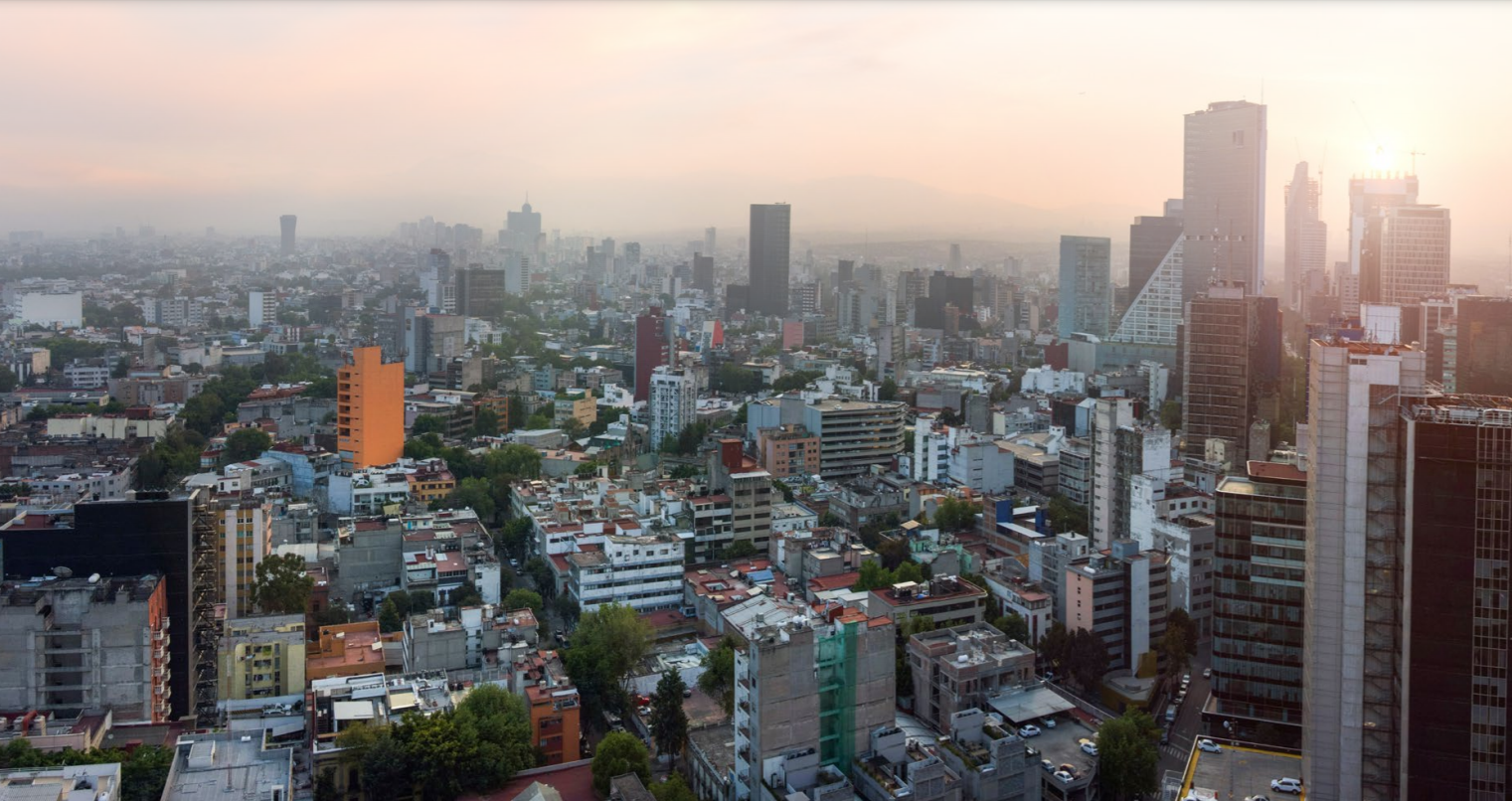 Picture from an urban area in India
Picture from an urban area in India
Reports of recent spikes in air pollution in Delhi – levels of PM2.5, the pollutant most harmful to human health, reached 367 µg/m3 on November 9th, over six times the national daily standard – bring a sense of déjà vu: it is the onset of winter and Delhi is once again making the news for very unhealthy levels of air pollution.
There is, however, another air quality trend that has largely gone unreported: air quality has improved in cities across the country since 2018. While air quality in these cities remains far from healthy, the improvement gives hope that things may be beginning to turnaround.
Delhi and the surrounding National Capital Region (NCR) are often the focus of media reports on air quality, but poor air quality is a concern across the country , as noted in a recent World Bank publication Clearing the Air: A Tale of Three Cities.
Of the 47 cities, for which there were sufficient data to estimate a credible annual average, only 3 met the national standard in 2018. The highest levels of PM2.5 were found in cities in the Indo-Gangetic Plain where average annual PM2.5 levels ranged from 53 µg/m3 in Ludhiana, Punjab to 161 µg/m3 in Ghaziabad, Uttar Pradesh.

Moreover, India appears to be on a more pollution-intensive growth path than countries at similar income levels. Mean annual PM2.5 exposure was higher in India, Nepal, and Pakistan when compared to other large middle-income countries at the same level of GDP per capita.
This feature of India’s growth path is a result of the fact that poor air quality in India is driven not only by urban sources, as is common in other countries, but also by a range of rural sources. The latter include known sources such as agricultural residue burning and household use of biomass for cooking and less-known sources such as excessive use of fertilizer, emissions from which contribute indirectly to the formation of PM2.5.
Air pollution challenge in India is therefore inherently multi-sectoral. It is also multi-jurisdictional. Air pollution travels across administrative boundaries, and pollution sources are therefore located both inside and outside of any given city.

While reports of poor air quality are undeniable and a cause for continued concern, particularly given the likely impact of air pollution in worsening the health impacts of the COVID pandemic, there is also some good news: air quality has started to improve in cities across India in recent years. That cities appear to have turned the corner!

Proportion of days in the year when air quality standards for PM2.5 is violated.
Source: World Bank staff calculations
Factors underlying this trend still need to be examined further. Government of India’s initiatives to improve vehicular technology and fuel quality standards, provide greater access to clean fuels to rural households, and focus attention on air quality management through the National Clean Air Program, among others, have likely played an important role.
Despite this good news, air quality in cities is still far from being considered healthy. Experience of three megacities -- Mexico City, Beijing, and Delhi -– in tackling air pollution suggests that there are three key elements of success: Information, Incentives, and Institutions.
Information
Data on air pollution concentrations and its health implications, on sources of pollution, on enforcement, etc. are critical for the design and implementation of air quality programs, including increasing the demand for action.
In Mexico City, careful analysis of the impacts of air pollution on children’s health galvanized public support for the city’s first air quality management strategy. In Beijing, real-time and public data from Continuous Emissions Monitors (CEMs) at industrial locations and power plants helped to hold plant operators and regulators accountable.
Over the past few years, India has made great strides in expanding the network of air quality monitors across the country and making this information publicly accessible , as evident from the analysis presented here.
India’s National Air Quality Index, initiated in 2015, has put real-time data on pollution levels in the hands of citizens , allowing them to take prevention measures and to demand change. On the other hand, data on industrial emissions from some 4,000 CEMS at different locations across the country remain largely inaccessible to the public.
Furthermore, it is important that data – on emissions and source structure of air pollution – be used to build air quality models that can in turn form the basis of cost-effective, time-bound air quality action plans.
One such effort is underway in India. As part of a technical assistance program between the World Bank and the Ministry of Environment, Forest, and Climate Change, an air quality planning tool is being developed for the Indo-Gangetic Plain, in collaboration between technical experts from the Indian Institute of Technology, Delhi, Indian Institute of Technology, Kanpur (India), National Environmental Engineering Research Institute, Nagpur (India), International Institute for Applied Systems Analysis, Vienna (Austria) and representatives of state pollution control boards and state technical institutes. Such modeling efforts need to be extended to other parts of the country and used to design city, state, and regional action plans.
Incentives
Policies and programs are needed to incentivize states and city governments on the one hand and industry and households on the other to take action to reduce air pollution. While it is important to established emission standards and to enforce the same, enforcement cannot be the only mechanism to ensure that governments, private sector, and households act. In the United States, for example, the Clean Air Act authorizes the federal government to provide grants up to 60 percent of the cost of state air quality management programs to encourage states to act.
Beijing used national government funds to provide subsidies for end-of-pipe controls and boiler retrofits in power plants and factories, rebates for scrapping older vehicles and payments to households to replace coal-fired heating stoves for gas or electric systems. Mexico City gave direct subsidies to drivers of old taxis in exchange for retiring and scrapping inefficient vehicles, along with access to low-cost loans to renovate or buy more efficient vehicles. More recently in India, performance-based grants to large cities to reward reductions in air pollution, provided as per the recommendations of the 15th Finance Commission, will help to incentivize cities to act. Cities will however need to use these funds to tackle pollution sources not only within but also outside of city boundaries.
Institutions
Because a number of sectors contribute to poor air quality, and air knows no boundary, a multi-sector, airshed-based approach is needed to tackle air pollution, as demonstrated by these cities. Institutions that cut across jurisdictions and sectors are needed to support airshed management.
The Megalopolis Environment Commission in Mexico, for example, brought together federal authorities from the ministries of environment, health, and transport with local authorities from Mexico City and 224 municipalities from the neighboring states of Mexico, Hidalgo, Morelos, Puebla, and Tlaxcala. Together, they jointly defined an airshed for Mexico City and took coordinated action to improve air quality.
Similarly, the Coordination Group for Air Quality Prevention and Control in the Beijing-Tianjin-Hebei and surrounding areas was established in 2013 with representatives from seven provinces and municipalities and eight ministries to achieve time-bound targets for air quality improvements.
In late October, the Government of India established the Commission for Air Quality Management in the NCR and Adjoining Areas to similarly coordinate actions by different governments within the airshed to tackle air pollution. The Commission will have representatives from state governments and relevant line Ministries, apart from technical experts and civil society representatives. The Commission has been assigned a range of functions and power to back them. Adequate funding and qualified staffing will be critical for success.


Join the Conversation